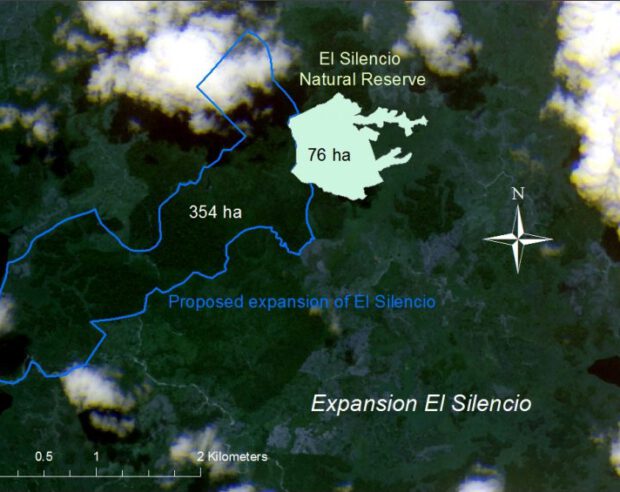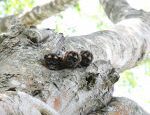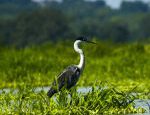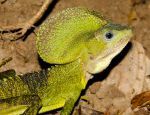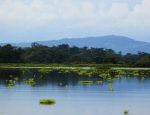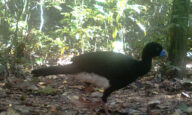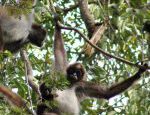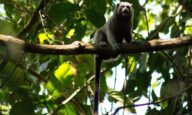The Habitat
The ecosystems of the Middle Magdalena Valley (MMV) belong to the threatened Tumbes-Chocó-Magdalena biodiversity hotspot and have high endemism and diversity.
The 58-hectare parcel of land that TiME purchased includes: 1) two very well-preserved forest patches (11.5 and 18.4 ha), where we have recorded the presence of many animals, including Blue-billed Curassows; 2) a secondary forest to the north (6.5 ha); 3) a connecting 30 m corridor of grasslands; and 4) an isolated grassland to the east for the restoration and protection of wetlands.
Ecoregion: Magdalena-Urabá moist forests (NT0137)
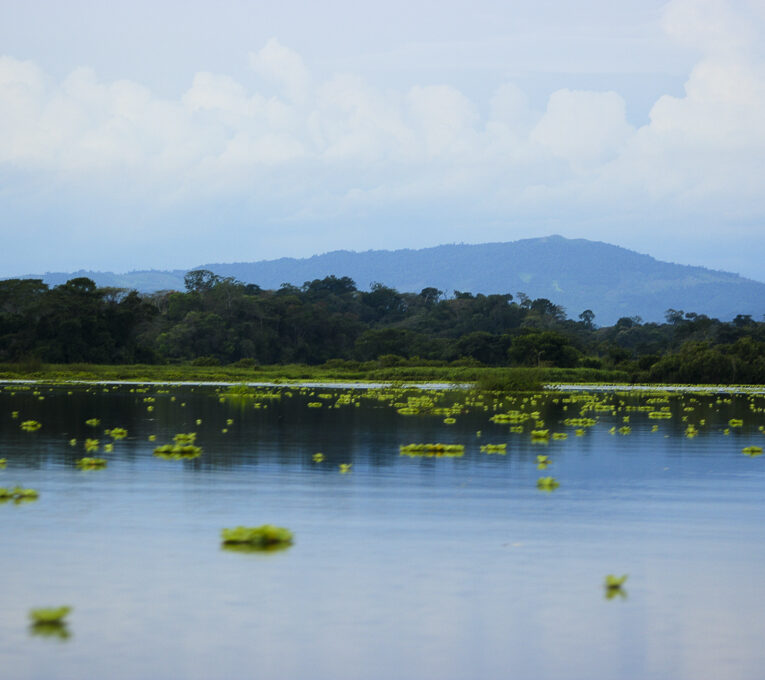
Some of the threatened species now protected on this land include:
- Critically Endangered Brown Spider Monkey (Ateles hybridus)
- Critically Endangered Blue-billed Curassow (Crax alberti)
- Critically Endangered Magdalena River Turtle (Podocnemis lewyana)
- Endangered Varied White-fronted Capuchin (Cebus versicolor)
- Endangered White-footed Tamarin (Saguinus leucopus)
- Near Threatened Colombian Mahogany (Cariniana pyriformis)
Local Partner NGO
Status of registration of the group at the national level
Nonprofit, nongovernmental organization (NGO) in Colombia
Governance and management structure of the group
The foundation is run by our president (Fernando Arbeláez), who reports to a board of directors composed of nine people. Management decisions are made at this level. There are also three administrative staff, including our forest guard, and 11 associated researchers who are involved in various projects. All, except administrative staff, are volunteers. Every year an external auditor verifies our annual financial report and accounting and certifies that it complies with Colombian regulations. We are also under the supervision of the Department of Legal Entities of the City Hall of Bogotá, to which we report annually. We provide periodic and detailed technical and financial reports to our donors, who can attest to our sound financial management and reliability.
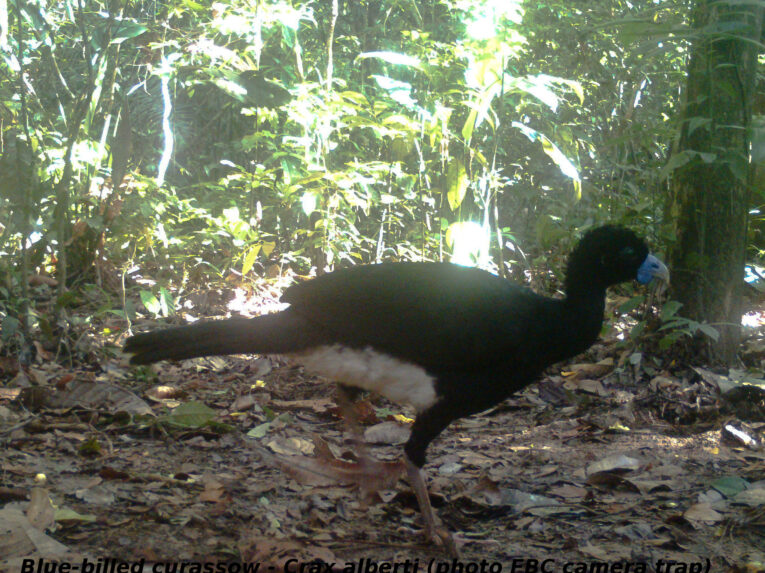
Conservation Plans
Ecotourism: This expansion makes the reserve much more interesting as an ecotourist destination. Tourists would enjoy excursions into the forest as well as ecofriendly boat excursions (e.g., canoe trips). Development will be carried out with limited impact on the environment and in collaboration with the local community, for which it could generate employment opportunities.
Visiting researchers: A larger reserve will also be of greater interest to national and international researchers, such as primatologists and ornithologists. A stable group of resident researchers, or ones that return on a regular basis, is a reliable source of income and information. At present we have arrangements for researchers with students to visit the reserve and use our existing research station, and we envisage an expansion of such arrangements.
Sustainable productive practices: We aim to research sustainable productive practices, including sustainable agroforestry, non-timber products and silvopastoral systems. These practices would not only serve as demonstrations or pilot projects for local landowners but would also generate income for the reserve while restoring the soils, protecting water courses and promoting biodiversity.
Friends of El Silencio: We will set up a fundraising scheme, whereby the public can become “friends” of the reserve for a monthly fee, endowing them with benefits (for example, a number of free nights at the reserve). We want to set this up as a tax-deductable venture, which is especially attractive for companies.
Payment for environmental goods and services, including carbon capture: In 2018 FBC is starting a carbon project in the Barbacoas area, funded by ISA, a Colombian electricity company, and in collaboration with South Pole and Panthera Foundation.The purpose is to generate incentives for conservation (avoiding deforestation), restoration and more sustainable practices for landowners through the verification and allocation of VCS/CCBS carbon credits. This project will not only contribute to our regional conservation and restoration plans but will also provide a regular income for the reserve and other projects in the area. We have also been discussing with the municipality the possibility of creating tax exemptions for conservation, using Barbacoas as a pilot area.
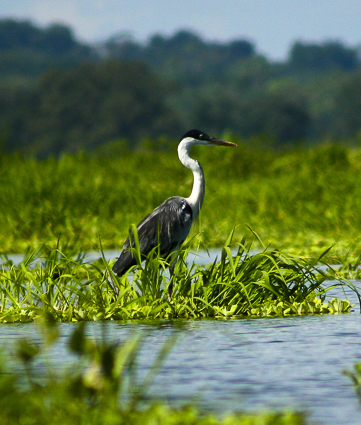
Updates
2023:
- Restored natural habitat, especially in areas adjacent to the Magdalena river, which is experiencing bank erosion due to poor forest cover.
- Partnered with a group of women who are part of the Bocas de Barbacoas fishing community to plant trees and manage a tree nursery.
- Maintained 3 tree nurseries and nearly 6,000 saplings to use in our forest restoration efforts.
- Using SMART mobile applications, recorded the routes and make observations of key animal and plant species, including 5 primate species, jaguars, pumas, and tapirs.
- Monitored Yellow-footed Tortoises, in cooperation with the Turtle Survival Alliance.
2022:
1. Species Monitoring: We continue to regularly see the Critically Endangered Brown Spider Monkey (with babies!) during patrols. Our cameras captured high-value species, such as this wonderful Jaguar (Panthera onca), and numerous records of Tapir (Tapirus terrestris), Tayras (Eira barbara), Blue-billed Curassows (Crax alberti), Tamanduas (Tamandua mexicana) among other species of birds and mammals. We determined there are at least three or four individual jaguars in the reserve, including a cub with its mother.
Our monitoring of birds continued with 17,532 registers, 30,760 individuals from 255 bird species, 3,648 individuals from 31 migratory bird species, 33% reported with diminishing populations. We also recorded new bird species for El Silencio including the Beautiful Woodpecker (Melanerpes pulcher), the rare Pearl Kite (Gampsonyx swainsonii), and the Rufous Motmot (Baryptengus martii), a species of large motmot that inhabits well-preserved humid forests.
For reptiles and amphibians, several rare and difficult to see species were found, namely, two blind snake species (Anomalepididae) and two frog species of the family Microhylidae (very rare), adding three new species to the reserve’s list.
We also added three new mammal species to the reserve’s species list, namely the Brown-throated Sloth (Bradypus variegatus); the Fringe-lipped Bat (Trachops cirrhosus), which eats frogs, lizards and insects; and the Olingo (Bassaricyon medius). This means we have both two-toed and three-toed sloth species in the reserve! The Olingo was expected but it is great to confirm its presence.
2. Conservation Tech: Together with Huawei, Colombian Humboldt Institute, and Rainforest Connection, we started a pilot project to test the forest-guardian technology to detect early deforestation threats, as well as for bioacoustics monitoring. We installed 10 guardians in El Silencio as well as in neighboring farms. The forest guardians analyse acoustic information, detect chainsaw sounds, and emit satellite alerts that are received on a mobile app. The project also includes a bioacoustics survey with 100 AudioMoth recorders that will be installed in different habitats, from clean grasslands to very well preserved forests. From this, an algorithm will be trained to automatically identify key species sounds (Blue-billed Curassows, monkeys, jaguars and others) and uploaded to the guardians so that they also emit real-time alerts for the presence of key species.
3. Restoration: The main ecosystem restoration activity was the implementation of a 7.5 ha restoration area surrounding the wetlands near El Silencio research station and Galilea sector. 2,018 trees from 48 species were planted, and our first survey showed less than 5% mortality. This restoration will help to connect the Galilea forests to the Selva verde forests, which is crucial for the Critically Endangered Brown Spider Monkey living in the Galilea forests.
4. Community outreach: In early in 2022, two herpetologists from the Universidad Nacional de Colombia gave an environmental education workshop about snakes as a response to snake-bite incidents in the local fishing village in the reserve. While fearful at first, participants in the workshop quickly became curious and discussions cleared up various superstitions and suspicions that people had about snakes. See more information here: https://www.patreon.com/posts/snakes-and-y-de-63084777
5. Reserve expansion: With support of Rainforest Trust and the American Bird Conservancy, we acquired the last remaining 530 hectares of forest on the Peñón del Caballo property, which now protects 93% of the main forest patch in the south and borders the Tablazo and Sardinata lakes, two wetlands that are very important for the water and fisheries regulation of the Magdalena River. Moreover, the same funding allowed us to buy the rest of Galilea farm, about 54 ha of grassland that will be restored in order to connect the Galilea forests to other forests in the reserve.
